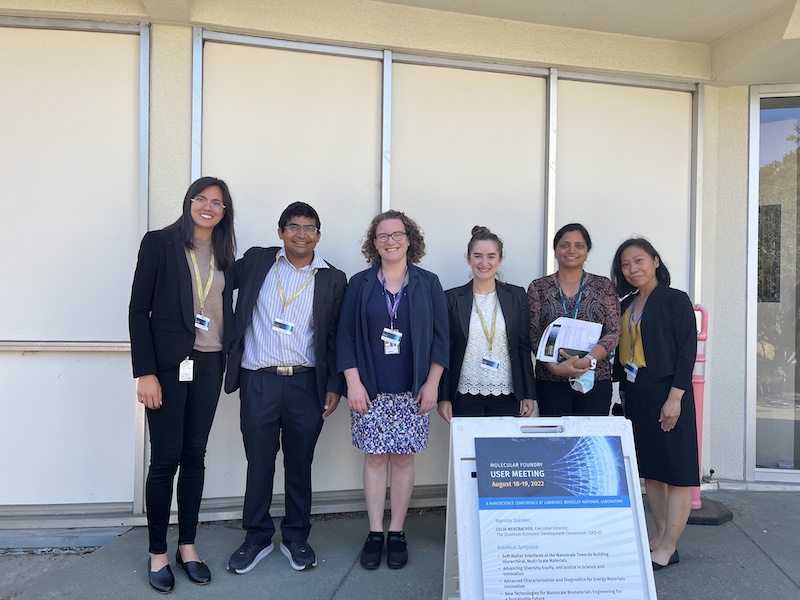Day 2 of the Annual User Meeting featured our eight breakout symposia split between two sessions. Across the morning session, meeting participants heard the latest with regards to soft matter interfaces, advancing equity, inclusion, and justice in science, advanced characterization techniques, and new technologies for biomaterials engineering.
At lunch, the Foundry recognized the Student Paper Award Winner, Samra Husremovic, and announced the four winners of the poster competition: Whitney Loo, Katherine Sytwu, Simon Arnold, and Nikhita Sridhar, as well as this year’s Staff Service Award winner, Liana Klivanksy.
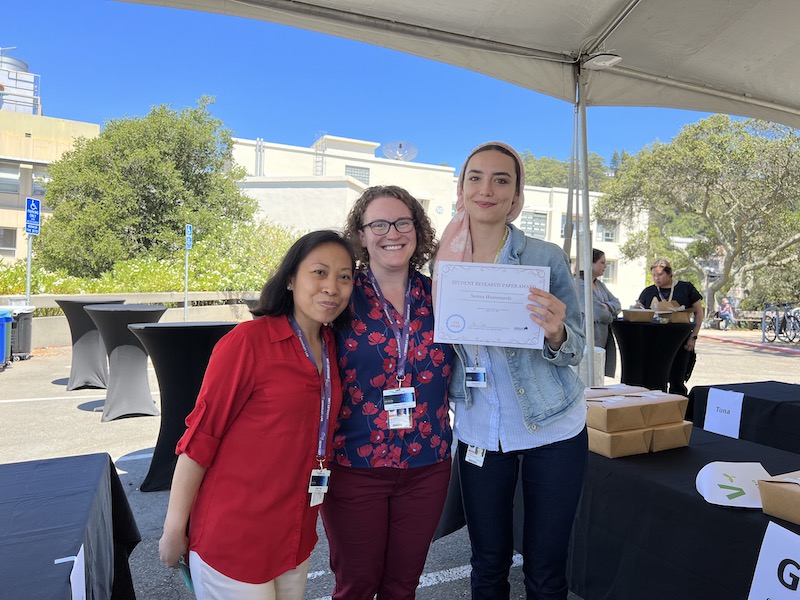
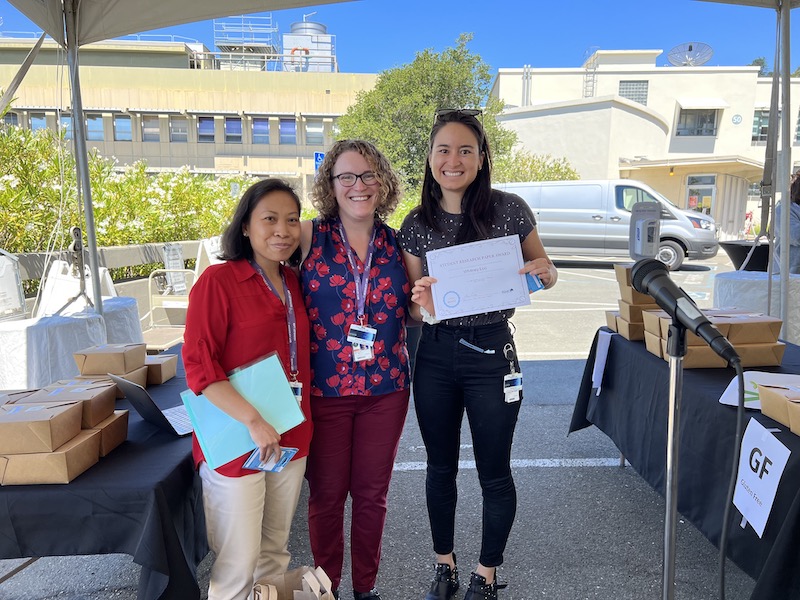
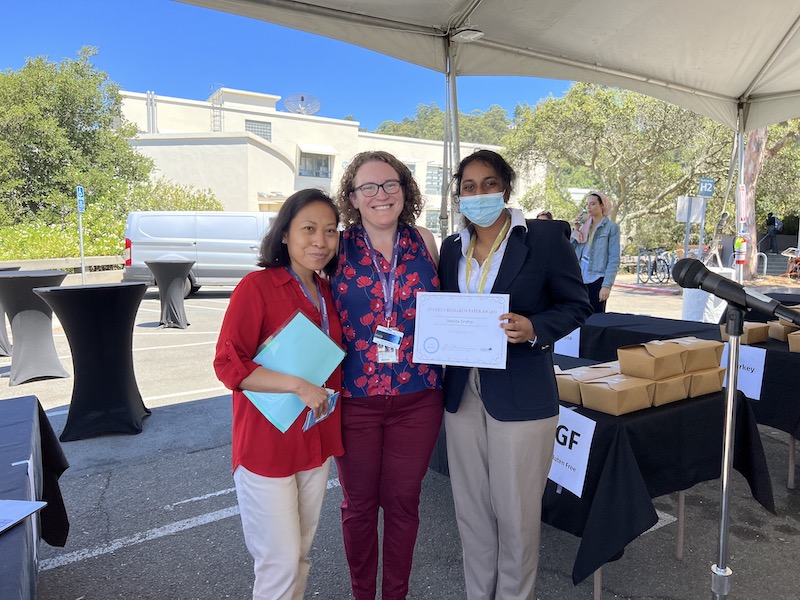
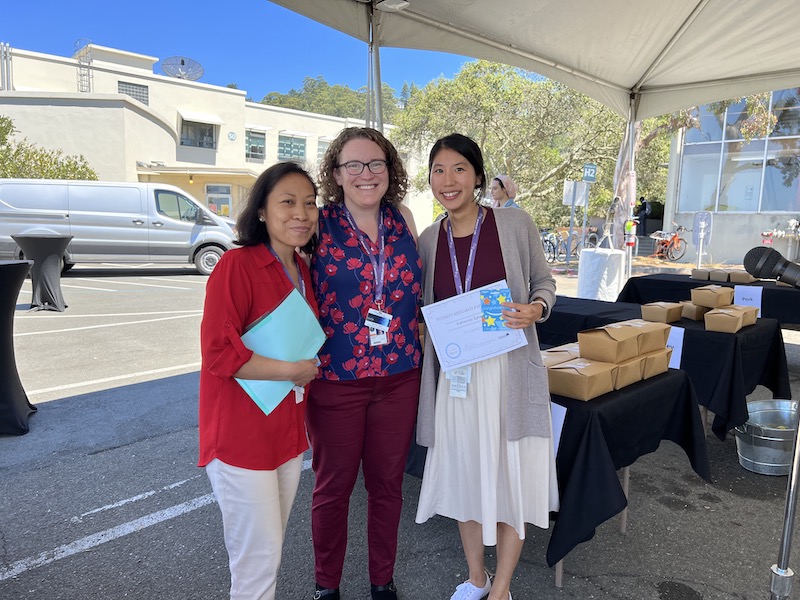
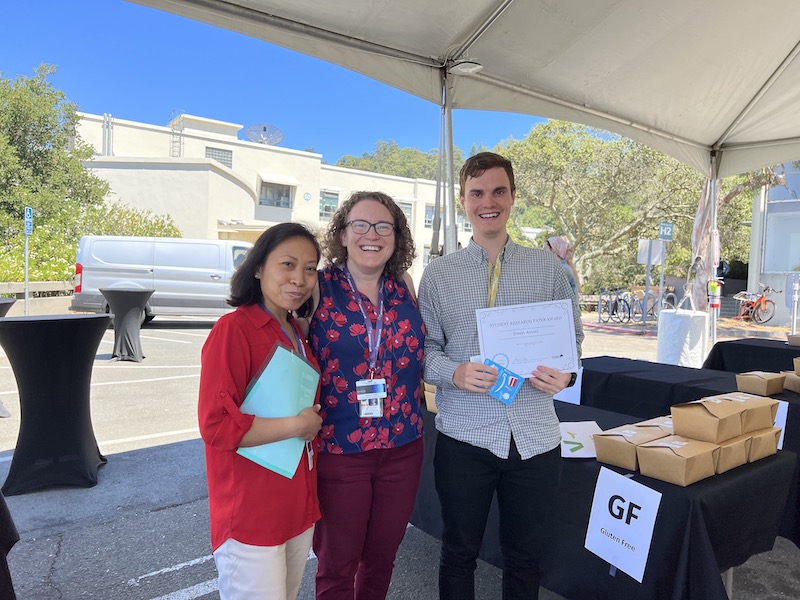
After lunch, the meeting continued with four more breakout symposia covering fundamental electro-optical properties of 2D semiconductors, updates on halide perovskites, correlative imaging of engineered biological materials, and energy storage for decarbonization.
Summaries of these symposia are below:
Advancing Diversity, Equity, and Justice in Science and Innovation
Boosting Diversity, Equity, Inclusion, and Justice (DEIJ) outcomes can be carried out with several approaches such as participatory decision-making and asset framing, while self-education on these topics was encouraged. Meanwhile, maximizing student and faculty diversity in STEM was illustrated by the long-standing efforts at San Francisco State University’s Student Enrichment Opportunities office. Research dedicated to water remediation in Kenya and providing energy access to Navajo and Hopi reservations were highlighted where scientific training was leveraged to serve communities. The discussion culminated with environmental justice and health equity from a legal standpoint. Examples of calls to action were provided.
Soft Matter Interfaces at the Nanoscale Towards Building Hierarchical, Multi-Scale Materials
This symposium featured invited and contributed talks focused on uncovering molecular-
scale physics at the interfaces between soft matter systems as well as controlling and
fabricating precise interfaces to construct multi-scale materials. While the presentations were
connected by the symposium theme, research applications included DNA origami,
nanocomposites for optical sensors and high-resolution masks for nanolithography. By
combining talks from academia and industry as well as experimental and computational
research, the symposium was filled with lively discussions involving both in-person and virtual
participants that were centered around future outlooks of soft matter interfaces and inspiring
future collaborations. One highlight of the symposium was the invited talk by Professor William
Shih from Harvard University whose presentation on multi-micron structures grown from DNA
origami slats sparked questions regarding the limitations of DNA self-assembly, energy input for
constructing high-information content nanostructures, and the possibility of leveraging Molecular
Foundry capabilities in top-down lithography to guide the assembly of these structures.
New Technologies for Nanoscale Biomaterials Engineering for a Sustainable Future
We are building a new user workflow at the Foundry for the design, biosynthesis, and characterization of bio(nano)materials. The nanoscale biomaterials symposium highlighted exciting and disparate biomaterial research projects that showcase the different possible entry points into this workflow. Dr. Setsuko Wakao kickstarted the symposium by sharing her work developing the highly porous and periodic structure of diatom silica-based frustules into synthetic nanomaterials with designed properties. Dr. Zhara Abdali presented a new strategy for producing high-purity bacterial collagen by leveraging the adapted secretion system of E. coli. Daniel Rosenberg, a PhD candidate at UC Berkeley, introduced the use of X-ray scattering interferometry combined with gold nanoparticle-conjugated DNA for understanding how proteins bend DNA when they bind. Dr. Rebecca Pinals shared her work on using single-walled carbon nanotubes complexed with ligand-binding proteins to develop optical biosensors for viral infections. Dr. Annelise Barron shared her group’s discovery of potentially game-changing thiourea-enhanced peptoid antibacterials. The symposium concluded with Dr. Ian Blaby whose talk featured DNA synthesis and engineering technologies at the Joint Genome Institute relevant to the discovery of proteins involved in natural biomaterials and synthetic biology for designed materials.
Advanced Characterization and Diagnostics for Energy Materials Innovation
In the last few years there has been an increased focus on development of innovative, low-cost, efficient and durable materials for batteries and fuel cells. Electron microscopy and related techniques are at the forefront of this effort allowing scientist to gain fundamental understanding of the structure-property-performance relationship in these materials. This symposium focused on advanced characterization methods for battery diagnostics and novel materials developments for battery applications. The topics covered using innovative materials diagnostic techniques including FIB sample preparation (cryoFIB, plasmaFIB, laser-PFIB), and 3D characterization, in-situ/in operando and cryo-TEM analysis, electrochemical analysis, XPS, and more.
Halide Perovskite Updates – From Fundamentals to Devices
The symposium on halide perovskites (Halide Perovskite Updates – From Fundamentals to Devices) combined talks from four invited speakers as well as contributed talks from four users of the inorganic facility of the Foundry. The invited speakers successfully illustrated the wide range of properties and applications of halide perovskites. Aditya Mohite from Rice University and Kai Zhu from the National Renewable Energies Laboratory discussed the benefits and pitfalls of low-dimensional perovskites and how to optimize them for their use in solar cells. Mengxia Liu (virtually joining from her office at Yale) presented impressive results on quantum-dot-in-perovskite solids, which have emerged as a new class of semiconductors with mixed dimensionalities, and Wanyi Nie from Los Alamos National Laboratory demonstrated the use of perovskites in X-ray sensors. In between the invited talks, former and current users of the Foundry presented the results they obtained here, emphasizing the great use of the Foundry’s and ALS’s capabilities for their studies. Despite some technical difficulties (shoutout to Perry for solving them!), all talks led to lively discussions, including the in-person and virtual audience as well as all speakers themselves. We are excited to conclude that the results presented by our users have convinced several invited speakers and symposium participants to submit new first-time proposals in the Foundry’s upcoming user proposal cycle.
Batteries and Beyond: Energy Storage to Decarbonize Buildings, Grid, and Industry
The diverse aspects of the Energy storage symposium beyond the well-known battery systems was enlightening. The symposium covered very high temperature storage (Sean Lubner) to ambient/room temperature storage (Wale Odukomaiya), and provided a wide range of possible research areas of interest to the Molecular Foundry user community. Secondly, we learned informative aspects of hydrogen as a carrier of energy, and not an energy source (Ahmet Kusoglu). The talks by postdoc (Daniel Collins-Wildman) and student (Ashley Bird) provided new perspectives and ideas at fundamental science in bench-scale setups, much different from the starting flavor of the session where Malta (Phil Delleville) provided insights into how a company is approaching the problem of energy storage, beyond batteries.
Fundamental Electro-Optical Properties of Novel Two-Dimensional Semiconductor Structures
This symposium coverd a wide range of fundamental electro-optical properties of novel two-dimensional materials connected to the formation of tightly bound excitonic quasi-particles from both the experimental and theoretical side. This includes different sample structures, from patterned monolayers to artificially stacked heterostructures, as well as a variety of distinct techniques and methods to describe, access and/or control excited electro-optical states inside these systems.
Correlative Imaging of Engineered Biological Materials
Advances in microscopy and analytical techniques have enabled visualization of the dynamic processes of biological molecules in vivo and in vitro. Methods including super resolution microscopy, scanning probe microscopy, cryo-electron microscopy and synchrotron X-ray techniques can watch these processes in real time, at nanometer length scales. Visualization of biological molecules will play an essential role in the understanding of nanoscale processes, allowing for the design and engineering of renewable biological materials based on such molecules. This symposium brought together researchers involved in cross-disciplinary work taking place at the Molecular Foundry and beyond to showcase cutting edge correlative imaging capabilities and foster collaboration and new directions.
Many thanks to the symposium organizers for their contributions to this article and to the User Executive Committee for their efforts in putting the meeting together.
